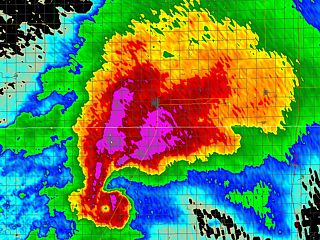Shell Mound wrote:ThetaE wrote:Shell Mound wrote:It also looks to be tracking significantly farther east than even the HWRF. At this rate the formative eye could just “scrape” the easternmost Isla de la Juventud.
Definitely seems like there was a bit of a reformation/snap of the center towards the deeper convection, which was (and still is) mostly on the northern side.
Given the current rate of intensification Ida could conceivably approach MH status at LF on western Cuba. I think 80–90 kt/970–975 mb seems quite likely, given the observed rate of deepening and organisation observed by radar, satellite, and reconnaissance. Ida’s current track, along with its relocated centre, would minimise interaction with the Isla de la Juventud and would maximise the storm’s time over the Gulf of Batabanó prior to landfall on the Cuban mainland. If I recall correctly, the most aggressive model run to date only suggested that Ida would approach ~70 kt/~985 mb at landfall on western Cuba. Ida currently looks to be at least 10 kt/mb stronger than that by the time it impacts western Cuba.
AlabamaDave wrote:grapealcoholic wrote:Camille
But Camille went east of New Orleans, although wow. The track is eerily similar other than that!
I am growing increasingly concerned that Ida could take a track similar to the 1947 hurricane or Betsy but feature a LF intensity comparable to Michael’s.
Before Cuba? That seems pretty fast. I'm a lot more hesitant. My general belief is that before TCs build a really mature structure (closed eyewall, symmetry, etc.), intensification tends to be very nonlinear and come in jumps and pauses. Sure Ida's pressure dropped a lot between the last two passes, but it was also constant between the first two passes (~1.5 hr gap). And last year, I remember Sally also put on a big drop in pressure to a strong TS/weak hurricane before flatlining for a long time while it sorted itself structurally. That drop, like this one, was the result of a center reformation towards some intense hot towers.
That said, Ida is definitely in a better position than Sally (which I'm using to illustrate my jumps/pauses point, not as an analogy for this situation). Clearly Ida is working to rapidly build an eyewall right now. It may not drop pressure much or increase winds while it does this, but it
is an important step in intensification that sets the scene for serious RI in the Gulf.
If Ida does build an inner core quickly, I could see something in the range of 70 kt/980 mb, maybe 75 kt. Otherwise thinking 65 kt/985 mb.
I'm a busy grad student, not a professional forecaster. Please refer to the NHC and NWS for official forecasts.















